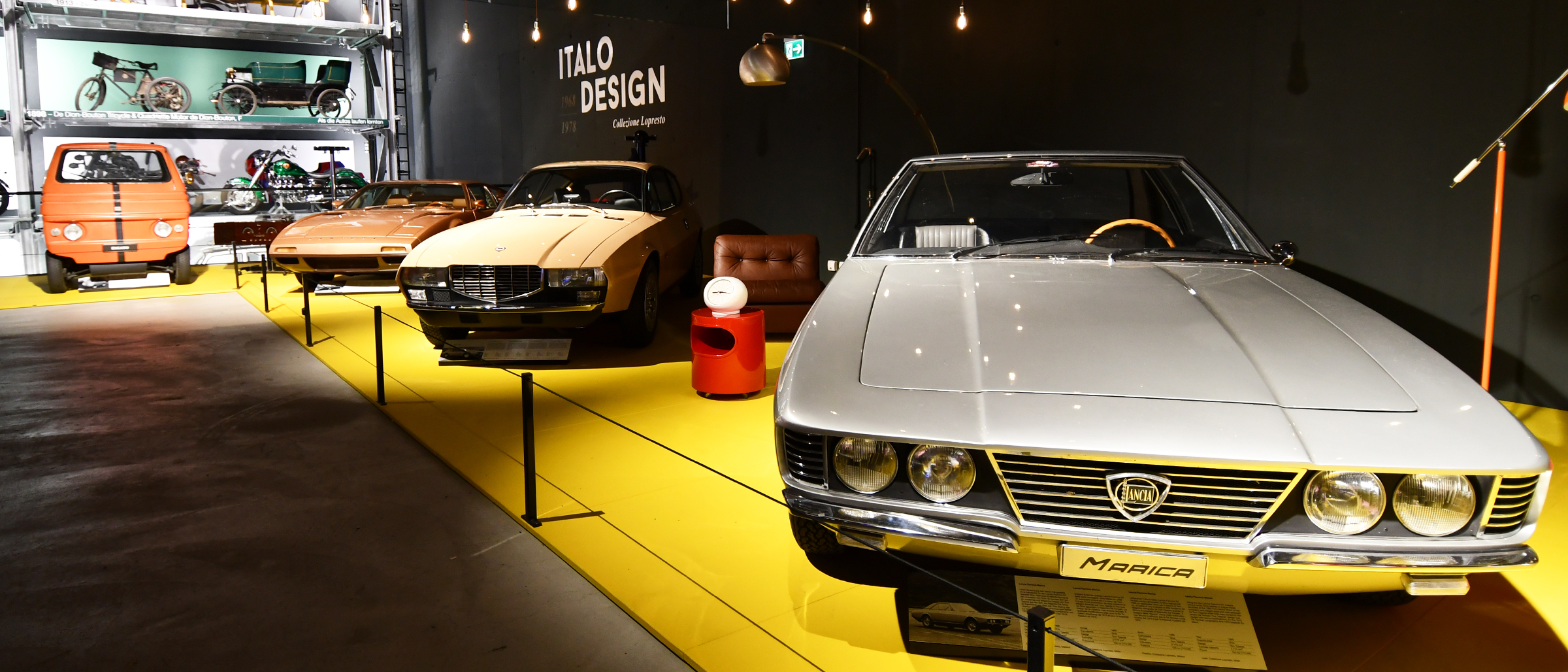
Exhibition: Italian Design, 1968−1978
The decade between 1968 and 1978, a period of profound social upheaval, produced objects that have remained unique to this day – ranging from furniture to cars and garish, rebellious clothes to everyday, utilitarian objects. Italian style is characterised by both fantasy and rigour. This period serves as the basis for a unique new exhibition staged in the Road Transport Hall at the Swiss Museum of Transport. Ten vehicles from the Lopresto Collection are on display. They are exhibited against a backdrop of original Italian designs of the 1960s and ’70s, ranging from stereo systems to sofas and lamps.
Award-winning car collector
The well-known Italian car collector Corrado Lopresto owns an outstanding collection of international renown. He specialises in collecting prototypes. When restoring his vehicles, he works with a team of specialists in coachwork, automotive electrics and mechanics, and electroplating. Lopresto bought his first car – a three-gear Fiat Balilla – at the age of 18, and restored this vehicle a year later in his family’s garage. Today, his cars are shown regularly at international elegance contests (concours d’élégance), and have won numerous awards.
Plastic bodywork from the 1970s
The Zagato Zele 1000 – a two-seater car with plastic coachwork, an electric engine and a Fiat chassis – was designed in response to the growing demand for small, environmentally-friendly city cars in 1970s. The concept was too progressive for the time and was quickly forgotten. During the same period, beach buggies came into fashion. These light vehicles, with a fibreglass body, were aimed at a young market. The example in the exhibition, an Autobianchi A 112 Giovani, remained a one-off piece, despite its success. Only very few examples of the Fiat 850 Visitors Bus were built. The Fiat factory used the bus, brightly painted in blue and light green, to transport visitors on its premises. This is the first time this model has been shown in Switzerland.
Unique, top-tier pieces
The Lancia Sibilo is a top-drawer show car. The prototype consists of a single, seamless body; not even the edges of the metal plates fused with the chassis are discernible. The Alfa Romeo Alfasud Sprint was made for a pre-series production. Italdesign − a design studio for various car brands – redesigned the car for the Paris Motor Show in 1976. The principal modifications consisted of new paintwork and a restructured interior. Other unique pieces in the exhibition include the De Tomaso Pantera 7X, which belonged to the chairman of the Ford car manufacturer, and the Lancia Flavia 2000 Super Sport. The design project for the latter model ended when Fiat took over Lancia in 1969.

